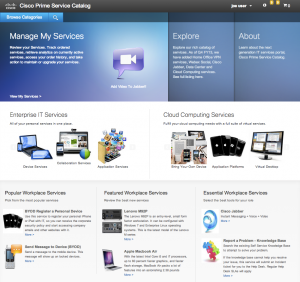When was the last time you turned on your new gadget, opened an app, or logged onto a website and found that you needed to attend a training course before you could use it effectively?
At times, we in the IT industry fall into the trap that we need the most advanced technical capabilities. After all, this is the great force that has produced numerous inventions and has made our lives better. However, when we focus too much on technical details rather than meeting our users’ needs, we fail to deliver not only for our customers but also for our business.
The IT team at a major global manufacturer recently told me about their company’s major investment in user experience design, because it is important for their brand image and business success. They are applying user-centered design not only to the products they make, but also to the IT systems they implement in-house. Even the U.S. government has a usability and user-centered design practice under http://www.usability.gov/basics/ucd/.
This year, our software development team embarked on a user experience update for our IT service catalog software by applying the user-centered design principle. We are showcasing this new user interface and introducing a new product name for the software – Cisco Prime Service Catalog – at Cisco Live Orlando this week.
Here is a preview of the next-generation user interface for Cisco Prime Service Catalog:

This new user experience highlights the services that end users may be interested in, with lists like “Most Popular Services”. If a user has a certain model of IP Phone, the service catalog may feature associated items such as a compatible headset. This familiar ecommerce experience is still governed by the service catalog’s entitlement and approval process, so the service owner has full control over service consumption. User experiences like this will help transform employees’ impression of their IT department. Service providers will also find that they can configure this new user interface to portray the brand image and customer experience they want to project.
Another initiative we have around the service catalog is to produce IT services that are user-focused rather than technology-focused. A service catalog was always meant to be a tool for IT to present their services in a way that the end user can understand and consume – regardless of the type of user or service. For example, employees get confused and frustrated when they cannot follow the 22 steps to register their new smartphone to use on the corporate network. The same is true when a road warrior requests a virtual desktop, or when an application developer requests a new cloud-based QA and test environment.
The reality is that solution architectures in IT – for example, a Bring Your Own Device (BYOD) program – can be complex. Some of the components required to support a BYOD service in an enterprise include the LDAP server, the certificate server, the network endpoints and the Mobile Device Management (MDM) system. However, end users do not want to know about all these supporting systems, nor should they. They should be able to go to one IT service catalog, find the service they need and make a request. Whatever needs to happen to complete the smartphone registration should happen behind the scenes, as long as the user is entitled to this service according to corporate policy. This is another aspect of user-centered design that Cisco Prime Service Catalog can enable. We will be showcasing user-centered solutions for BYOD and Virtual Desktop Infrastructure (VDI) at Cisco Live.
As a product vendor, it may seem trite for us to say that we are focusing on the user experience. However, our strategy is grounded in concrete steps. We are updating the user interface for the Prime Service Catalog to provide an out-of-the-box experience centering on users’ needs. At the same time, we are building service content that helps users experience advanced technology such as BYOD and VDI without getting entangled in the architectural complexities. We’ve already been doing this for IaaS solution architectures, providing out-of-the-box service content packaged in our Cisco Intelligent Automation for Cloud solution (which includes the Cisco Prime Service Catalog). Now we’re expanding our portfolio of pre-built service content.
So why the new name you ask? This new name for our IT service catalog software (from the newScale acquisition) reflects the fact that it is now part of Cisco’s Prime portfolio of management software solutions, providing benefits in consistent user experience as well as integration with other Cisco architectures. Cisco is focused on providing a next-generation solution that streamlines the processes by which all IT services are offered, ordered and delivered through our service catalog and self-service portal. Whether customers are deploying the solution for workplace and end user IT services or cloud computing and data center infrastructure services, Cisco offers a unified service catalog solution.
If you are interested in finding out more about the Cisco Prime Service Catalog, come talk to us at the Cisco Prime booth at Cisco Live Orlando or get product information at: http://www.cisco.com/go/service-catalog.
CONNECT WITH US